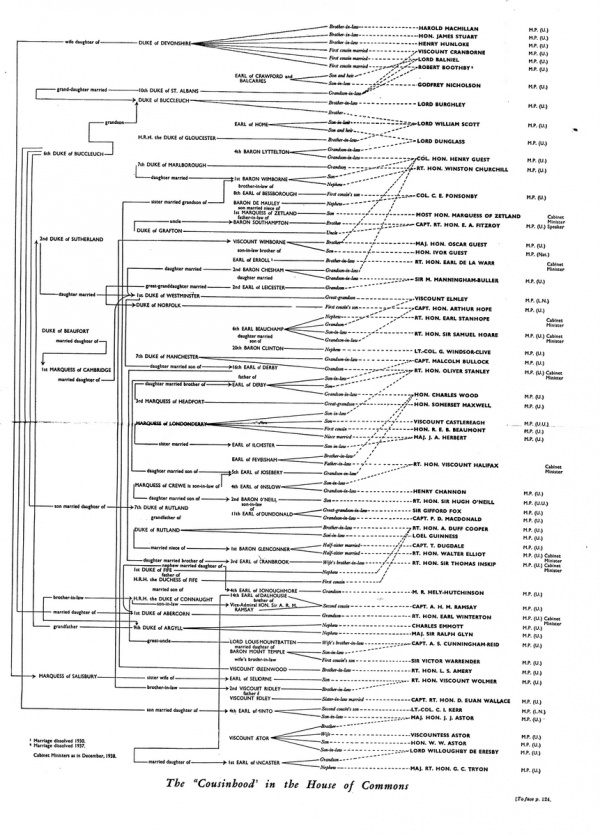Difference between revisions of "Tory MP"
| (21 intermediate revisions by the same user not shown) | |||
| Line 1: | Line 1: | ||
| − | Tory MP is a book by [[Simon Haxey]] published by Victor Gollancz in 1939. It catalogues the 'personnel of the Tory Party and the | + | [[Image:Tory-1.jpg|thumb|right|600px|The Tory 'Cousinhood']]''Tory MP'' is a book by [[Simon Haxey]] published by Victor Gollancz, London in 1939. It catalogues the 'personnel of the Tory Party and the opinions of leading Tories who have held the reins of Government for eight years; its object is to show the true character of Toryism or Conservatism'.<ref>From the Introduction, p. 9</ref> |
Included is a network diagram of the Tory 'Cousinhood' in the House of Commons which we reproduce here. | Included is a network diagram of the Tory 'Cousinhood' in the House of Commons which we reproduce here. | ||
| − | [[ | + | |
| + | |||
| + | ==Notes== | ||
| + | <references/> | ||
| + | |||
| + | [[Category:Conservative movement]][[Category:Social network analysis]][[Category:Power structure research]] | ||
Latest revision as of 13:49, 31 March 2014
Tory MP is a book by Simon Haxey published by Victor Gollancz, London in 1939. It catalogues the 'personnel of the Tory Party and the opinions of leading Tories who have held the reins of Government for eight years; its object is to show the true character of Toryism or Conservatism'.[1]
Included is a network diagram of the Tory 'Cousinhood' in the House of Commons which we reproduce here.
Notes
- ↑ From the Introduction, p. 9
